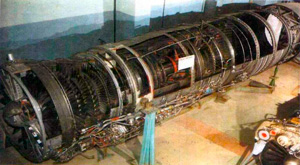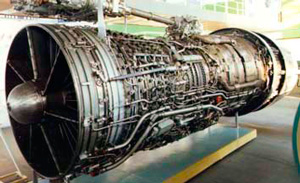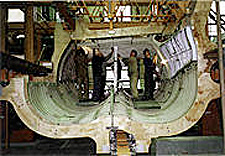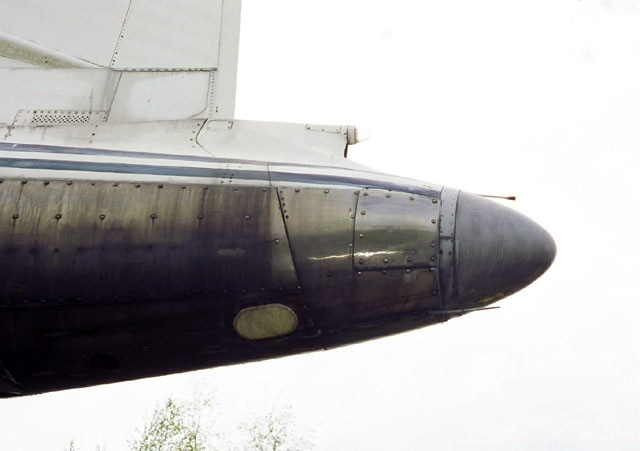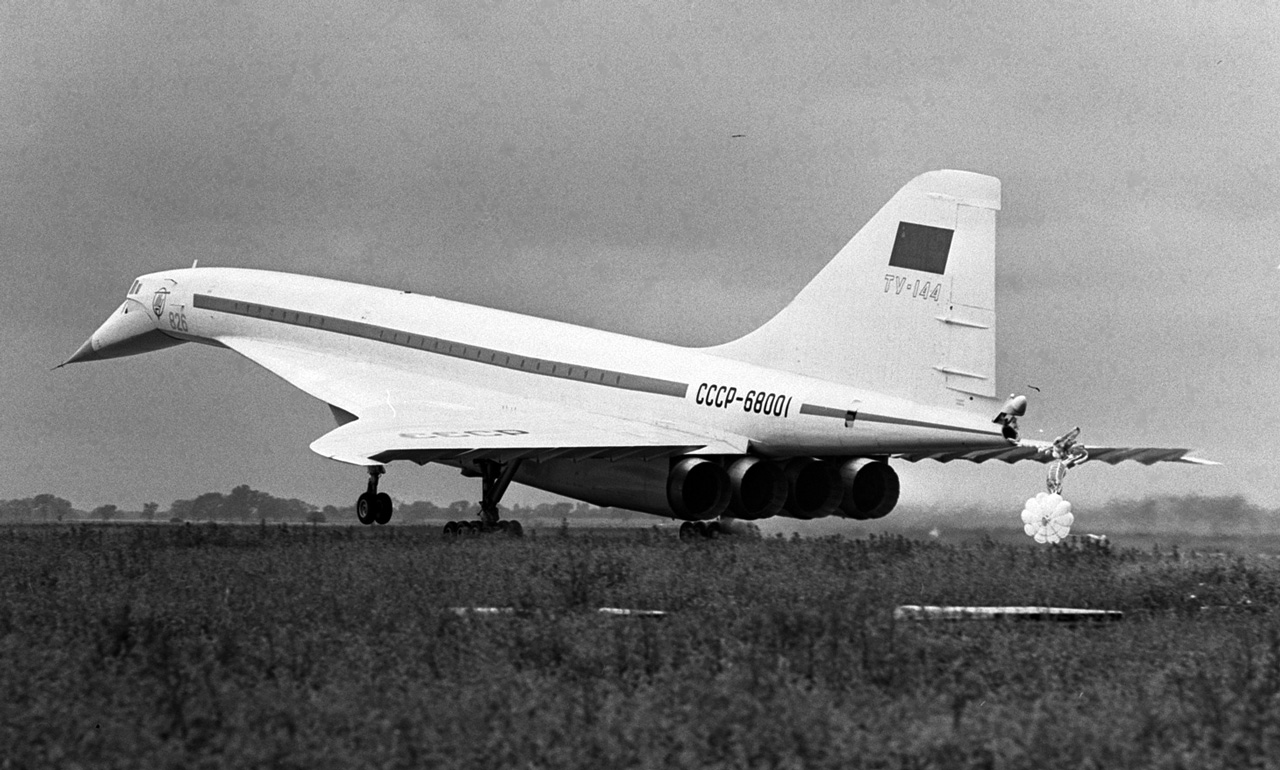|
Originally the Kuznetsov NK-8 turbofan, engine of the IL-62 airliner, was used as basis for the design of the engine for
the first SST. After many upgrades and more than a thousand test-hours, the new engine became a reality as the Kuznetsov
NK-144, a 2 spools turbofan engine with 14 compressor stages, 3 in the low pressure area and 11 in high pressure zone.
Four of these engines put into the air the first SST history on 31 December 1968 and became the Tu-144 in the first
passenger aircraft to exceed Mach 2.0.
|
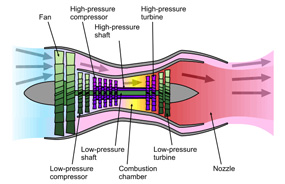
Operation of a turbofan engine
|
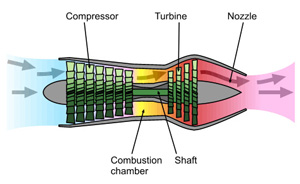
Operation of a turbojet engine
|
In spite of these achievements, the NK-144 did not fulfil with the expectations placed on it. A best performance in fuel
consumption was required if the Tu-144 wanted be used in long routes. After the accomplishment of a big number flights
test, the Specific Fuel Consumption was established in 2.23 kg/hr and the range of flight of the aircraft resulted
limited to 2,920 km, too far than the expected and desired for an airliner.
|
|
The selected engine was the low bypass turbofan NK-321, an improved version of the engines of the bomber Tu-160. This
new engine had 3 spools and 12 compressor stages, 5 in the low pressure area and 7 in high pressure zone. All flights
test were performed over Russian territory because that engine model was catalogued as military secret. Those engines
transformed the Tu-144 in an excellent tool for the accomplishment of the targets of the experiments.
|
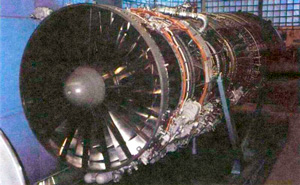
Engine Kuznetsov NK-321 for Tu-144LL
|
A common point in all engine models used in the Tu-144 is that all they were equipped with a reheat system or afterburners.
This is a system that injects fuel directly into the jet pipe downstream of the engine, producing its inflammation and
providing an extra thrust to the aircraft needed in take-off or when Mach 2.0 speed is wanted.
|
|
The use of this brake system was necessary if the Tu-144 wanted to stop after the landing in the 1,900 meters that allow
it to operate in the main airports of the world. In addition of the drag parachute, the Tu-144 was equipped with a system
of hydraulically powered carbon brakes that help in the task of to stop the aircraft after the landing.
|

|
Equipping the Tu-144 with thrust reverses was always a goal for the Tupolev designers. When they were asked about that
possibility they answered it was planned to install them in the two outer engines (number 1 and 4) in future versions of
the Tu-144. In the left picture (from aircraft CCCP-77115) it's possible to see reverse levers on the throttle of engines
1 and 4. This shows that the Tu-144D model was very close to be equipped with a thrust reverse system.
|
|
In the Tu-144 each engine was provided with its own air intake, even after the installation of double separated nacelles
in the pre-production aircraft. Originally the four engines NK-144 were mounted side by side but, due to problems with
vibrations and high cabin temperature, the next models of Tu-144 were two separate nacelles holding two engines each,
both positioned near the centre of the aircraft in order to guarantee the longest possible air intakes.
These long air intakes holds inside the necessary ramp system for to reduce the speed of the airflow at all speeds up to
Mach 2.0 down to a level suitable for the engines. A more sophisticated ramp system would have allowed a reduction in
the length of the air intakes.
|
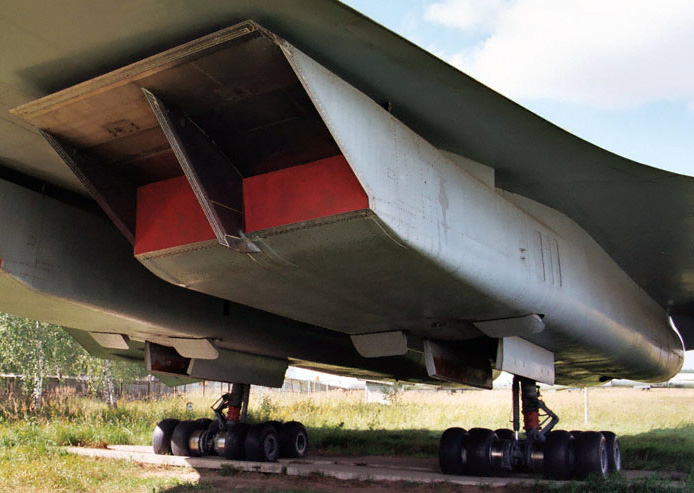
|
Inside the air intakes an internal horizontal ramp varies from an up position at speeds below Mach 1.25 to full down at
Mach 2.0. Three shocks are produced in the inlet during supersonic flight in order to slow the inlet flow to subsonic
speeds. Each air intake was operated by automatic control system which could change ramp position and by-pass flap
depending on engine setting.
|






